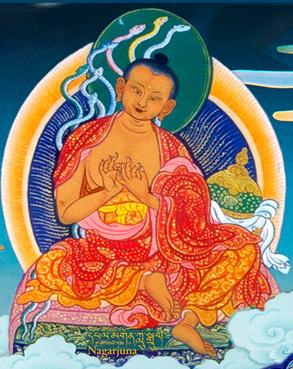Four great logical arguments of the Middle Way: Difference between revisions
Jump to navigation
Jump to search
mNo edit summary |
m (→External Links: Links adapted for LH 3.0, replaced: tibetan-masters/nyingma-masters → tibetan-masters) |
||
| Line 17: | Line 17: | ||
==External Links== | ==External Links== | ||
*{{LH|tibetan | *{{LH|tibetan-masters/mipham/four-great-logical-arguments|''The Four Great Logical Arguments of the Middle Way'' by Jamgön Mipham Rinpoche}} | ||
Revision as of 11:52, 27 September 2012

The four great logical arguments of the Middle Way (Tib. དབུ་མའི་གཏན་ཚིགས་ཆེན་པོ་བཞི་, Wyl. dbu ma'i gtan tshigs chen po bzhi) are:
- The investigation of the cause: the Diamond Splinters
- The investigation of the result: refuting existent or non-existent results
- The investigation of the essential identity: ‘neither one nor many’
- The investigation of all: the Great Interdependence
Sometimes it is said that there are ‘five great arguments of the Middle Way,’ but, according to Mipham Rinpoche, the fifth—the investigation of both the cause and the effect: refuting production according to the four alternatives—can be included within the first category, i.e., the investigation of the cause.
Further Reading
- Kangyur Rinpoche, Treasury of Precious Qualities (Boston & London: Shambhala, 2001), pages 334-338.
- Ringu Tulku, The Ri-me Philosophy of Jamgön Kongtrul the Great (Boston & London: Shambhala Publications, 2006), pages 199-202.